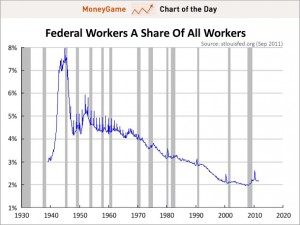
To those of us that follow the U.S. federal workforce, the news of the near-crisis that is employee engagement is not new. Specific numbers from various reports and pundit observations may vary to some degree, but the overall view is pretty much accepted – employee morale for federal workers is bad. No sugar coating it. While it varies between agencies and there are pockets of improvements, at a high level the numbers are not good.
For sure, I agree with leading federal HR expert Jeff Neal that it’s not all bad. There are good and great federal employees performing well and doing great work.
However, at a high level, federal employee morale is a serious problem. This is backed up by the Office of Personnel Management’s 2014 Federal Employee Viewpoint Survey Results. Neal, the Washington Post, Federal Times, Government Executive and Federal News Radio have all written about the federal employee morale and leadership problem. The results of this annual survey get worse every year, and employee engagement and leadership issues are at the heart of the matter.
I believe it’s not too dramatic to call the situation a crisis. We have a federal retirement tsunami looming, a new huge potential market of potential employees (millennials) who are avoiding the government and a large existing workforce that has poor morale and little faith in its leaders.
If this was a private sector company, stockholders and other stakeholders would be screaming for change!

The dire situation led to a December directive to all federal agencies from Shaun Donovan, director of Office of Management and Budget (OMB). The directive outlined a series of steps the office is directing agencies to take to address employee engagement and leadership problems. The directive states that “the federal workforce is the crucial driver of mission success. We believe that employee engagement is a leading indicator of performance and should be a focus for all levels of an agency — from the front line employee to the agency head. Employee engagement is not only a Human Resources function, but a cross-cutting leadership effort that is directly tied to mission success.”
The directive stresses the importance of measuring employee engagement so that improvements or declines can be seen, reported and acted on. The Washington Post’s Joe Davidson reported that in an interview, Beth Cobert, Deputy Director for OMB, highlighted the importance of measurement by stating “this has been a very big focus across the administration. It is something we talk about at virtually every PMC (President’s Management Council) meeting. It is something the president talks about and stresses at cabinet meetings. I know this is something the most senior levels care about.”
Apparently, Obama is paying attention and wants accountability along with measurement to better understand what is and is not happening in terms of employee engagement and leadership.
Makes sense – how can you know whether or not you are improving if you don’t measure?

But not everyone is on board. The Post’s Davidson points out that William R. Dougan, president of the National Federation of Federal Employees, thinks OMB’s “data wonks” give too much attention to metrics and the “engagement index” doesn’t mean much to real people – i.e. employees and tax payers. Dougan says “our focus needs to be on doing a better job of engaging employees and I would argue that the engagement scores will take care of themselves.”
In my view, Dougan is missing a key point – data can lead you to better engagement!
And that will lead to what he wants: federal agencies “doing a better job of engaging employees.”
You can’t just put out a memo and say “go be better leaders” or “go engage your employees,” etc. It’s a start, but it’s not going to get you the visibility and accountability you need.
Jack Welsh would never have uttered those words to his well-trained GE managers and left it at that. He needed to know what was working and what was not. Which teams, which managers, which policies.
Here’s just a small sample of what data and talent analytics can show:
- Which managers have the most engaged employees and which have the least engaged employees?
- What amount of manager-employee interaction is best for employee morale?
- How often are employees receiving feedback from their managers and how is this impacting the employees’ morale and performance?
- How can agency, team and individual goals be best aligned to improve employee engagement and morale?
- Why do some teams and agencies have better employee engagement and better morale?
- Which agencies’ employees like the work they are doing the most?
- Do some agencies’ employees think they are doing important work more than other agencies’ employees?
- Do employees like their co-workers?
The number of questions that can be answered by analytics is virtually endless. And the answers can provide the necessary insight to help direct an agency to pay more or less attention to particular areas that can have the highest or most immediate impact.
This is a much more thoughtful, insightful and accountable approach than Dougan’s “do a better job of engagement.”

The data continues to pour in — federal leadership and employee engagement are in trouble.
Good news — the data can show agencies the way out of their troubles.
What do you think about federal employee engagement?





Leave a Reply
You must be logged in to post a comment.